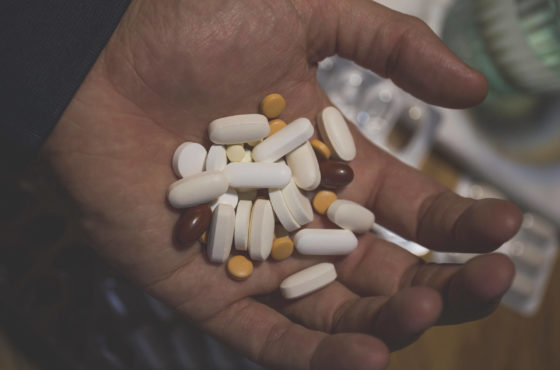Addiction is described as a disease by several medical associations including the American Medical Association.
According to them, “Like diabetes and cancer, addiction os caused by behavioral, environmental, and genetic factors.”
There may be different types of substance abuse, but opioid addiction is unlike any other.
The truth?
Opioid use can lead to physical dependence or opioid addiction faster compared to other types of substances.
Aside from that, another fact that you might not have known until now is that men and women may differ in experiences and issues when it comes to substance abuse.
After all, for decades, men were the only participants in addiction research that examined the effects of alcohol and drugs on them.
It wasn’t until 1990s when U.S. organizations included women as study participants.
However, we are still not far from the problem: a gender-based approach to treat women with opioid use disorder.
How Substance Abuse Differs between Men and Women
Even though both men and women may fall victim to substance abuse, women face unique issues when it comes to substance use.
These can be influenced by sex, or differences that result from biology, and gender differences, which are culturally defined roles set by the society for men and women.
Research has also found many distinctions in how men and women engage in substance use and how they react to these substances.
For instance, women utilize drugs in smaller amounts compared to men, but they tend to experience the effects more strongly.
Women’s substance use also tend to escalate more quickly from first use to addiction.
Moreover, women are more likely to have more cravings for drugs, and they may also be more likely to relapse following treatment.
Substance abuse may also be caused by other personal or environmental factors. For instance, women who suffer from domestic violence can be put at an increased risk of substance use.
This is the same for circumstances like death of a partner or a child, loss of child custody, and divorce. These events in life can all be roots of substance abuse in women, along with other mental health disorders.
As a result, women who use such substances are more likely to suffer from anxiety, panic attacks, and depression.
Drug Use During Pregnancy
Drug use during pregnancy can both be harmful to the woman’s health and to the health of her baby, and it can have short and long term effects.
Several drugs, including stimulants and opioids, can be pose a risk to an unborn baby.
Utilization of substances can also result in an increased risk of miscarriage as well as cause seizures, migraines, and heightened blood pressure in the mother, which can all equally affect the fetus.
Meanwhile, for women who take prescription pain relievers, women who smoke marijuana or tobacco, and use illicit drugs during pregnancy, the risk of stillbirth is up to 3 times greater.
A couple of surveys found that more women are smoking marijuana during pregnancy, which was a cause of concern for health care professionals.
According to The American College of Obstetrics and Gynecology (ACOG), marijuana use can lead to a woman giving birth to a smaller baby, especially if the mother was smoking marijuana more frequently during the first and second trimesters.
ACOG suggests that women who are pregnant or wanting to get pregnant should stop the use of marijuana, even for medical purposes.
Another risk that comes with a woman’s regular drug use during pregnancy is a condition called neonatal abstinence syndrome or NAS.
It is when a baby goes through withdrawal symptoms, wherein these symptoms can occur in a newborn immediately or up to 14 days.
Some of the symptoms of NAS include:
- fever
- diarrhea
- seizures
- blotchy skin coloring
- increased heart rate
- rapid breathing
- slow weight gain
- poor feeding
- vomiting
There are several factors that can affect the severity of the baby’s withdrawal symptoms, including what drug or drugs were used, for how long and how often the mother used the drug, and how her body breaks them down.
Substances like alcohol, nicotine, marijuana, as well as other medications, can be found in breast milk.
Although experts are unsure about the long-term effects these substances may have on a child who was exposed to them through breast milk, they do know that teens who begin using drugs while their brains are still on the process of development could be harming their learning abilities.
With all these risks of substances in a baby, it is important for any woman to talk with their health care provider about the use of substances.
The Differences in Opioid Use Disorder between Men and Women
Even though men are more likely than women to use the illicit opioid heroin, because women are more likely to experience chronic pain as compared to men, women are more often given prescription opioid pain relievers.
To add to that, women are more likely to receive additional pain medications which increases the risk of overdose.
In fact, research has found that the use of opioid as a medical treatment for pain is more common in women as compared to men.
Women use these medications for many reasons. It can be for menstrual pain or menopause, hormonal issues, breastfeeding, pregnancy, and fertility.
But ever since the opioid use disorder has grown into an epidemic, women have also resorted to opioids in order to self-medicate, even for weight control and mental health issues.
Women with ages 45 to 54 are more likely to receive as much as twice opioid prescriptions compared to their male counterparts.
As a result, women between these ages are also more likely than women of other age groups to die from an opioid overdose.
This cause for concern has urged thousands of U.S. citizens who fell victim to the ongoing opioid epidemic to stand for their rights by filing opioid epidemic lawsuits.
Losing a loved one after a drug overdose and other side effects of opioid addiction are just some of their reasons behind joining the legal battle.
Women are more Likely to Suffer from Opioid Use Disorder Compared to Men
According to a report from the Centers for Disease Control and Prevention (CDC), women are more likely to live with chronic pain. As a result, they may make use of prescription opioid pain medications for longer periods of time and are prescribed higher doses compared to men.
Some of the most commonly prescribed opioids are oxycodone, methadone, fentanyl, codeine, hydrocodone, and morphine.
It is important to note, however, that despite the significantly higher rates of prescription opioids given to women, men are more likely to succumb to opioid use disorder.
Symptoms of opioid use disorder may include:
- Struggle to manage excessive opioid use
- Social problems
- Failed efforts to decrease opioid use
- Execution of simple tasks and obligation at work, home, or school are being affected
Opioid Use Disorder During Pregnancy
According to The Centers for Disease Control and Prevention (CDC), the number of pregnant women who has opioid use disorder during labor and delivery saw higher rates and in fact more than quadrupled between 1999 and 2014.
Opioid use disorder during pregnancy can result in maternal death, stillbirth, preterm birth, and neonatal abstinence syndrome.
A 2017 study from HHS found that women who enter treatment programs usually arrive with a myriad of issues, such as medical, behavioral, social, and psychological issues.
These problems were also found to be more complex than the opioid use disorder which originally brought them to the treatment programs.
In seeking opioid addiction treatment, looking for a licensed treatment facility that can help pregnant women safely stop opioid use and have their opioid addiction treated is a great way to start.
When it comes to treatment of substance use disorders, medical professionals make use of medications to suppress uncomfortable withdrawal symptoms as well as decrease cravings for opioids.
Medications used in opioid detox and subsequent treatment include methadone and buprenorphine combined with other treatments that can improve outcomes for those pregnant women who suffer from opioid addiction.
The good news?
Other opioid addiction treatment centers also provide helpful services like parenting classes, job training, and child care.
The Importance of Women in Research
Several decades ago, experts held the belief that woman are more complicated than men and that women were too occupied with household chores and caring for their children, that’s why they didn’t feel the need to include women in most research.
However, this strategy of including only a specific population proved that it only produces new knowledge that would help only a certain portion of the public.
Federal agencies like the National Institutes of Health (NIH) have stood up and pushed for women to be included as participants in clinical research.
These significant effort made sure that all subgroups of people are included and that more issues linked to sex and gender are being studied and paid attention to by several agencies.




